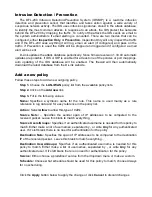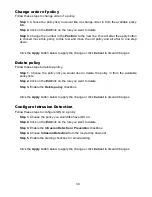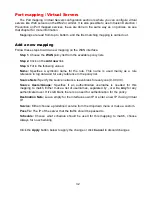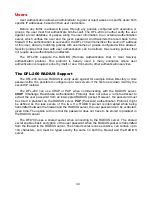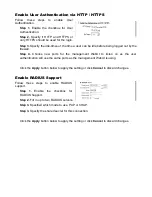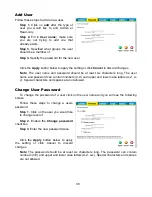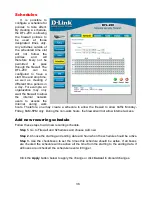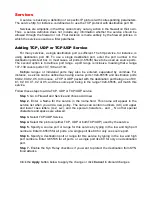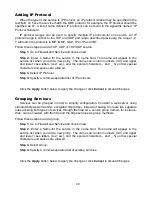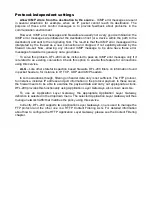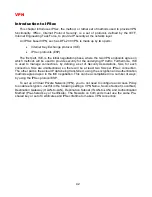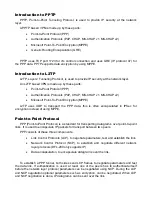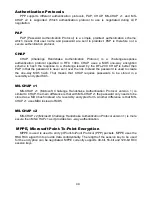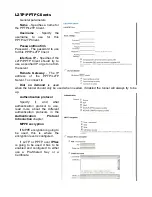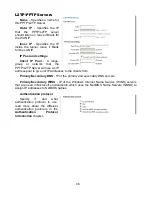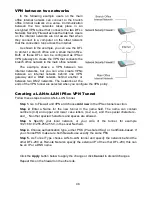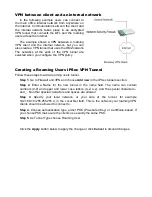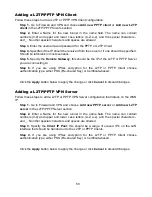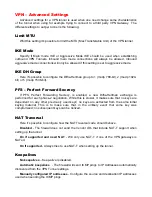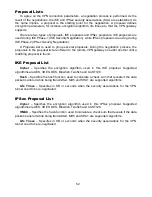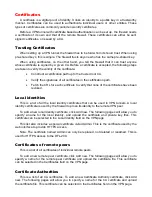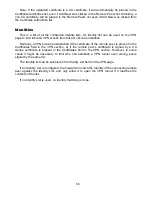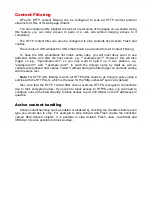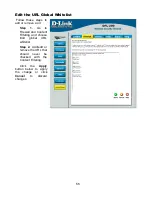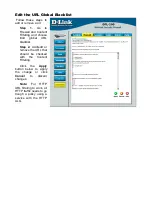
Introduction to PPTP
PPTP, Point-to-Point Tunneling Protocol, is used to provide IP security at the network
layer.
A PPTP based VPN is made up by these parts:
•
Point-to-Point
Protocol
(PPP)
•
Authentication Protocols (PAP, CHAP, MS-CHAP v1, MS-CHAP v2)
•
Microsoft Point-To-Point Encryption (MPPE)
•
Generic Routing Encapsulation (GRE)
PPTP uses TCP port 1723 for it's control connection and uses GRE (IP protocol 47) for
the PPP data. PPTP supports data encryption by using MPPE.
Introduction to L2TP
L2TP, Layer 2 Tunneling Protocol, is used to provide IP security at the network layer.
An L2TP based VPN is made up by these parts:
•
Point-to-Point
Protocol
(PPP)
•
Authentication Protocols (PAP, CHAP, MS-CHAP v1, MS-CHAP v2)
•
Microsoft Point-To-Point Encryption (MPPE)
L2TP uses UDP to transport the PPP data, this is often encapsulated in IPSec for
encryption instead of using MPPE.
Point-to-Point Protocol
PPP (Point-to-Point Protocol) is a standard for transporting datagram’s over point-to-point
links. It is used to encapsulate IP packets for transport between two peers.
PPP consists of these three components:
•
Link Control Protocols (LCP), to negotiate parameters, test and establish the link.
•
Network Control Protocol (NCP), to establish and negotiate different network
layer protocols (DFL-200 only supports IP)
•
Data encapsulation, to encapsulate datagram’s over the link.
To establish a PPP tunnel, both sides send LCP frames to negotiate parameters and test
the data link. If authentication is used, at least one of the peers has to authenticate itself
before the network layer protocol parameters can be negotiated using NCP. During the LCP
and NCP negotiation optional parameters such as encryption, can be negotiated. When LCP
and NCP negotiation is done, IP datagram’s can be sent over the link.
Summary of Contents for DFL-200 - Security Appliance
Page 102: ...102 5 Select Connect to the network at my workplace and click Next ...
Page 103: ...6 Select Virtual Private Network connection and click Next ...
Page 104: ...104 7 Name the connection MainOffice and click Next ...
Page 105: ...8 Select Do not dial the initial connection and click Next ...
Page 106: ...106 9 Type the IP address to the server 194 0 2 20 and click Next 10 Click Finish ...
Page 129: ...VCCI Warning ...
Page 132: ...132 ...
Page 133: ......

